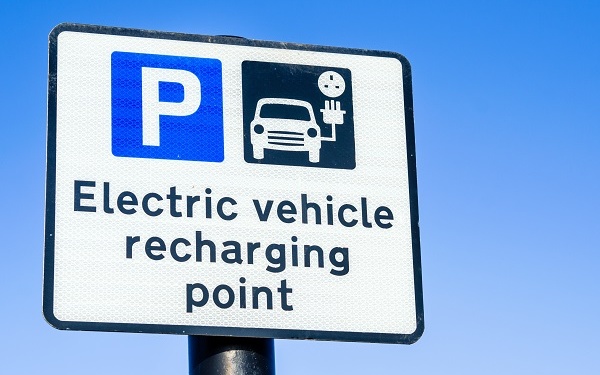What plans are in place to prevent incidents that have the potential to cause significant disruption across the country? And how do we evaluate the risks society faces on a daily basis?
There are a whole host of hazards that could cause a widespread emergency in the UK. Naturally, the Blackout report focuses almost exclusively on the threats to our electricity supplies.
But there are plenty of other events that have the capacity to kick-start such serious damage – either to life itself or our way of life – that they require a coordinated national response.
Some risks might sound like something straight out of a Hollywood blockbuster or the crazed mind of a conspiracy theorist. But the Government and other agencies have to plan for almost every eventuality.
Such incidents are categorised as a civil emergency and are covered by the Civil Contingencies Act 2004, the legislation setting out the responsibilities for assessing, planning for, and responding to the most critical dangers we face.
The Government produces a National Risk Register every two years, which offers its official analysis of the biggest threats to the United Kingdom over the coming five years. Its findings are based on a classified (i.e. confidential) National Risk Assessment document.
There are four major categories of threat in the public National Risk Register:
- Natural hazards
- Major accidents
- Societal risk
- Malicious attacks

Each risk is rated by the likelihood of it occurring and its potential impact. The text also outlines the preventive measures in place to mitigate.
Naturally, not every risk is on a UK-wide scale. Several Local Resilience Forums (LRFs) across England and Wales are responsible for planning and preparation for specific threats based on local conditions, infrastructure and geography.
These LRFs broadly follow police force boundaries. They are made up of Category 1 responders (i.e. local councils, the NHS, the Environment Agency, emergency services), who are supported by Category 2 responders such as Highways England, transport providers and energy companies.
Local Resilience Forums devise their own specific Community Risk Registers and Emergency Recovery Plans to prevent and mitigate the impact of any incident on their local communities.
Regional Resilience Partnerships and Emergency Preparedness Groups undertake a similar role to LRFs in Scotland and Northern Ireland, respectively.
The National and Community Risk Registers incorporate dozens of dangers with the potential to cause a civil emergency, ranging from flooding and public disorder, through to terrorism, industrial accidents and infectious disease outbreaks.
Both the likelihood and impact of every risk is rated on a 1-5 scale. To reflect the inherent uncertainty, both scales are broad. In addition, there isn’t any direct correlation between likelihood and impact scores.
Impact is measured by considering the possible consequences to:
- Health (i.e. number of fatalities, injuries or people seriously affected)
- Society (i.e. disruption to services, food and supply of money)
- Economy (i.e. the direct and indirect cost)
- Environment (i.e. long-term contamination or pollution)
| Score | Impact | Likelihood | % likelihood in next 5 years | Likelihood in next 5 years |
| 1 | Limited | Low (Negligible) | > 0.005% | > 1 in 20,000 |
| 2 | Minor | Medium-Low (Rare) | > 0.05% | > 1 in 2,000 |
| 3 | Moderate | Medium (Unlikely) | > 0.5% | > 1 in 200 |
| 4 | Significant | Medium-High (Possible) | > 5% | > 1 in 20 |
| 5 | Catastrophic | High (Probable) | > 50% | > 1 in 2 |
Risks are rated as follows:
- Very high: most critical risks requiring immediate attention. Can have a high or low likelihood of happening, but the possible consequences are so serious they must be treated as the highest priority. Require specific strategies to reduce or eliminate the risk, plus multi-agency plans to mitigate the fallout of any such incident occurring.
- High: significant. Can have a high or low likelihood of happening, but the possible consequences are so serious they warrant appropriate consideration.
- Medium: less significant but has potential to cause short-term upset and inconvenience.
- Low: unlikely to occur and not significant in impact. Can be managed using normal planning contingencies.
What Risks Could Severely Disrupt Electricity Supplies?
| Risk ID | Risk Overview | Likelihood | Impact | Rating |
| H41 | Total shutdown of the UK electricity network | 3 | 5 | V High |
| H45 | Regional shutdown of the electricity network caused by severe weather or technical failure | 3 | 4 | V High |
| H38 | Rota Disconnections – emergency power cuts to balance capacity with demand | 2 | 4 | High |
| H56 | Severe space weather equivalent to the Carrington Event of 1859 which would cause widespread disruption to the electricity network | 4 | 4 | V High |
| H17 | Severe weather – storms & gales | 3 | 3 | High |
| H18 | Severe weather – low temperatures & heavy snow | 3 | 3 | High |
| H48 | Severe weather – heatwave | 4 | 3 | High |
| H19 | Flooding – coastal & tidal | 2 | 5 | V High |
| H21 | Flooding – fluvial (river floods following sustained periods of heavy rainfall) | 3 | 4 | V High |
| H22 | Flooding – surface water | 3 | 3 | High |
| X2 | Physical attack on infrastructure i.e. terrorism | 3 | 3 | High |
| X6 | Cyber-attack – infrastructure | 2 | 3 | Medium |
| X7 | Cyber-attack – data confidentiality | 5 | 1 | Low |
Whatever the preparations and planning, no matter how robust the procedures and how rigorously they’ve been tested, there’s no guarantee they’ll ever be completely flawless.
Even though National Grid and other stakeholders are meticulous in their processes, how do you ‘war game’ for a complete failure of the electricity grid. It’s not quite the same as a fire drill – you can’t just cut everyone’s power, even with prior warning!
Numerous documents leaked in the not too distant past suggest that the country isn’t as prepared as you’d expect.
In 2014, the Daily Telegraph reported government preparations for severe power cuts had been based on “flawed and untested assumptions” that required urgent updating.
A test drill codenamed Exercise Hopkinson simulated the outcome of a severe storm cutting power to two million houses across the southwest of England for up to a fortnight.
Civil servants prepared intensively for a year in the run-up to the test, but a review of the operations revealed the response would be too slow and only arrive “after the local emergency resources and critical utility contingency measures had already been consumed”.
A key failing centred on supplies of fuel crucial to keep backup generators and emergency response vehicles running. Availability would be compromised because most petrol stations and fuel reserves rely on electric-powered pumps.
While in 2015, the Private Eye magazine reported on leaked Cabinet Office and Treasury contingency plans for a five-day UK-wide emergency power cut.
The proposals were drawn up in response to fears that electricity supply would outstrip demand during the winter when renewable generation sources are unreliable.





Towards what happened in Portugal and Spain last Monday, I’m reading every line you wrote about it. Apparently we suffered an H41 based on a H38.
Are you going to write about what you suppose happened here?
The reports the media are broadcasting seem to be mostly guesses and hunches, with low to none expertise associated.
Thank you,